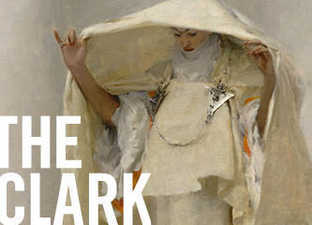Clark Art Announces Summer Exhibitions
WILLIAMSTOWN, Mass. — The Clark Art Institute announced its summer 2022 exhibition schedule, featuring porgrams including a survey of Auguste Rodin's sculpture.
“Each year, we try to present a range of exhibitions that offer new scholarship, spark new ideas, and introduce new concepts or artists to our audiences. But with every show, we also hope to inspire a moment of delight——pleasure in seeing something beautiful, learning something new, or seeing something different. We think that this year will be a summer full of delights at the Clark," said Olivier Meslay, Hardymon Director of the Clark Art Institute. “We will look at one of the world's great sculptors, Auguste Rodin, but we will be looking at his work through a very specific lens that tells a fascinating story of his early reception in the United States. We are particularly eager to introduce the distinctive prints of the Mexican modernist José Guadalupe Posada and believe they will offer new perspectives on an important period in Mexican history. And we are truly pleased to present an intriguing show that unites the works of two artists, Tauba Auerbach and Yuji Agematsu, under the canopy of a single concept, the meander."
The Clark's summer exhibitions open on a staggered schedule, beginning in June. The program includes:
Rodin in the United States: Confronting the Modern
June 18–Sept. 18, 2022
"Rodin in the United States: Confronting the Modern" considers the artist's legacy in America from 1893 to the present. This exhibition tells the story of the collectors, art historians, critics, gallerists, and philanthropists—notably, many of whom were women —who endeavored to make Rodin known in the United States. The nearly 1,300 works by Rodin held in American museums and private collections today testifies to their success.
"Rodin in the United States: Confronting the Modern" includes approximately fifty sculptures and twenty-five drawings, presenting both the artist's familiar masterpieces and lesser-known works of the highest quality. The exhibition emphasizes Rodin's expertise across materials and media, with prominent examples of plaster, bronze, marble, graphite, and watercolor.
The exhibition is organized by the Clark Art Institute and guest curated by independent scholar Antoinette Le Normand-Romain.
José Guadalupe Posada: Symbols, Skeletons, and Satire
July 16–Oct.10, 2022
José Guadalupe Posada (1852–1913) was recognized already in 1888 as “the foremost caricaturist, the foremost graphic artist" of his native Mexico. A tireless producer of caricatures and satirical imagery for the penny press, Posada built his career in an era of political repression and lived to see the social changes brought by the Mexican Revolution of 1910.
This exhibition, drawn from the extensive collection of Posada's works at the Amon Carter Museum of American Art in Fort Worth, Texas, showcases the visual culture of Mexico in the years before its 1910 Revolution.
This exhibition is organized by the Clark Art Institute and curated by Anne Leonard, Manton Curator of Prints, Drawings, and Photographs.
Tauba Auerbach and Yuji Agematsu: Meander
July 16–Oct. 16, 2022
This exhibition pairs new work by Tauba Auerbach and Yuji Agematsu, across parallel galleries in the Lunder Center at Stone Hill. The artist's experimentation in a range of media produces work that is as rigorous as it is visually arresting: calligraphic drawing, infrared imaging, and large-format painting are all part of Auerbach's universe.
For Agematsu handheld sculptures are like small worlds. The flotsam he finds—a foil wrapper, spent fireworks, a fishbone—interest him both aesthetically and anthropologically.
This exhibition is organized by the Clark Art Institute and curated by Robert Wiesenberger, associate curator of contemporary projects.
Also on view this summer is Tomm El-Saieh: "Imaginary City," presented in public spaces around the Clark.
The exhibition title comes from one of the works in the show (Vilaj Imaginé) and refers to a cityscape theme common in Haitian art. For the artist, who has been unable to return to his birthplace in recent years due to the instability there, Port-au-Prince now also exists mainly as a figure in his memory and imagination—a site of joy and trauma, potential and uncertainty.
This yearlong exhibition, on view through Dec. 31, 2022, is free and open to the public.
This exhibition is organized by the Clark Art Institute and curated by Robert Wiesenberger, associate curator of contemporary projects.
Tags: Clark Art,

